It's a Wonderful World

Brief Synopsis
Cast & Crew
W. S. Van Dyke Ii
Claudette Colbert
James Stewart
Guy Kibbee
Nat Pendleton
Frances Drake
Film Details
Technical Specs

Synopsis
Novice private detective Guy Johnson is hired by Willie Heyward, a sodden millionaire with a penchant for trouble, to extricate him from a murder charge. Guy finds himself implicated in the crime when he is arrested and sentenced to prison for concealing his client. Armed with the single clue to the case, a half dime, the other half of which is in the possession of the murderer, Guy escapes from the train bound for Sing Sing, kidnaps freelance poet Edwina Corday and hijacks her car. The murderer's trail leads to upstate New York, and along the way Edwina falls in love with her captor. Comic complications arise as she enthusiastically joins the chase, aiding Guy as he disguises himself as a Boy Scout leader, a chauffeur and an actor to elude the police. They finally arrive at the small town on the Hudson where the real murderer is performing in an amateur theater group. With his half dime, Guy flushes out the real killer, and the crime solved, wins exoneration for both himself and his client.

Director
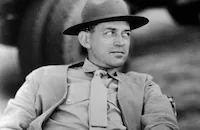
W. S. Van Dyke Ii
Cast

Claudette Colbert

James Stewart

Guy Kibbee
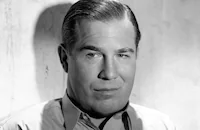
Nat Pendleton

Frances Drake

Edgar Kennedy

Ernest Truex

Richard Carle
Cecilia Callejo

Sidney Blackmer
Andy Clyde
Cliff Clark

Cecil Cunningham
Leonard Kibrick

Hans Conried
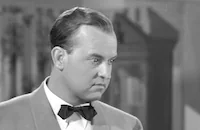
Grady Sutton
Jack Norton
Frank Faylen
Edgar Dearing
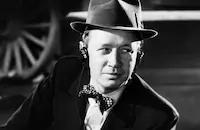
Eddie Acuff
George Chandler
Lester Dorr
Dorothy Ates
Nell Craig
Carl Stockdale
William E. Lawrence
Lulu Mae Bohrman
Monya Andre

Fay Mckenzie

Bess Flowers
Mary Louise Smith
Harold Miller
David Newell
Peter Du Rey
Maurice Costello
Hal Cooke
Louis Natheaux
Albert Morin
Rae Daggett
Frank Coghlan Jr.
Philip Morris

Phillip Terry
Rex Evans
Monte Vandergrift
Tom Hanlon
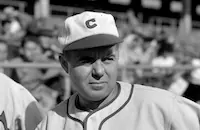
Ray Walker
Murray Alper
Wally Maher
Bud Mctaggart
Harold Hoff
Jack Raymond
William Tannen
John Dilson

George Meeker
Harry Burns
Crew
Adrian
Hugh Boswell
Frank Davis
Charles Dorian
Cedric Gibbons
Paul Groesse
Sydney Guilaroff
Ben Hecht
Ben Hecht
Harold F. Kress
Herman J. Mankiewicz
Oliver T. Marsh
Douglas Shearer
Edward Ward
Edwin B. Willis

Photo Collections
Film Details
Technical Specs

Articles
It's a Wonderful World
Hecht was one of the most in-demand writers in Hollywood when he sat down with the equally witty Herman J. Mankiewicz to put together a screwball farce for MGM. They came up with a story about a private eye on the run from the law who takes an eccentric lady poet hostage to help him prove his client innocent of murder. They also came up with a series of clever gags and disguises -- most notably Stewart's posing as an actor named Ernest Hemingway and his impersonation of a gangling scout leader in short pants, scouting shirt and inch-thick glasses. Hecht even threw in some private jokes, naming one character Willie Heyward in reference to his agent, Leland Hayward, and another Herman Plotka, a combination of his co-writer's name and Mildred Plotka, the real name of the actress character in his classic farce Twentieth Century. With the script finished, Hecht went on to his next project, an uncredited gig doctoring the script for Gone With the Wind (1939).
It's a Wonderful World was Colbert's first film at MGM, but her dreams of getting the Metro glamour treatment were dashed when director W.S. Van Dyke was assigned to the picture. Although he had helped create the screwball genre as director of The Thin Man in 1934, he was popular with studio head Louis B. Mayer mainly because he worked quickly, earning the nickname "One Take Woody." His female star was appalled at how quickly he threw the film together, being used to the more leisurely pace at her home studio, Paramount, where great care was always taken to showcase her beauty. Nor was she very happy when the film's road-trip plot led to less than favorable comparisons to her earlier hit It Happened One Night (1934). As consolation, she could revel in the more positive reviews for the film that had preceded this one, the glittering romantic comedy Midnight (1939). Her next film was also an improvement as she teamed with director John Ford and co-star Henry Fonda for Drums Along the Mohawk (1939).
Leading man Stewart was under contract to MGM at the time, but the studio never seemed to know how to exploit his talents until other studios led the way for them. A 1937 loan-out to Columbia for Frank Capra's You Can't Take It With You had proven his skill at folksy comedy, which explains his casting in this screwball farce. But his fans at the time were horrified to see him playing a cynical and chauvinistic private eye who at one point even slugs his leading lady.
Although It's a Wonderful World got some good reviews, particularly from Hecht fan Otis Ferguson in The New Republic, it was mostly dismissed by critics for having too many cheap laughs. Writing for the New York Times, Frank Nugent complained, "Ben Hecht must have sent out native beaters with tom-toms and slapsticks to drive stray gags from miles around into the Metro corral for It's a Wonderful World....The comedy is almost too strenuous for relaxation." After only three years as an MGM producer, Frank Davis would return to writing after this picture, scoring some of his biggest successes with his scripts for A Tree Grows in Brooklyn (1945) and The Train (1964). Before that, however, he would issue his own rather prophetic assessment of the production: "The studio should have known that Jimmy Stewart would never do any of those unconvincing things. However, I predict that his next film, Mr. Smith Goes to Washington [1939], will more than make up."
Producer: Frank Davis
Director: W.S. Van Dyke II
Screenplay: Ben Hecht
Based on a story by Hecht and Herman J. Mankiewicz
Cinematography: Oliver T. Marsh
Art Direction: Cedric Gibbons
Music: Edward Ward
Principal Cast: Claudette Colbert (Edwina Corday), James Stewart (Guy Johnson), Guy Kibbee (Capt. Streeter), Nat Pendleton (Sgt. Kortz), Edgar Kennedy (Lt. Miller), Ernest Truex (Willie Heyward), Sidney Blackmer (Al Mallon), Andy Clyde (Gimpy), Cecil Cunningham (Mme. Chambers), Hans Conried (Stage Manager), Grady Sutton (Lupton Peabody).
BW-87m. Closed captioning.
by Frank Miller

It's a Wonderful World
Quotes
Trivia
Many easily recognized cast members who are supposed to be in this film (according to studio records) are not seen in the print. These are Jack Norton, Eddie Acuff, Lester Dorr, Dorothy Ates, Nell Craig, Carl Stockdale, Bess Flowers and David Newell.
Notes
According to a news items in Hollywood Reporter, Myrna Loy was originally slated for the role of Edwina Corday, but had to withdraw because of prior commitments. After Loy's departure, M-G-M considered Frances Drake for the lead. This was Claudette Colbert's first picture for M-G-M. The picture was filmed on location in San Diego, CA.















